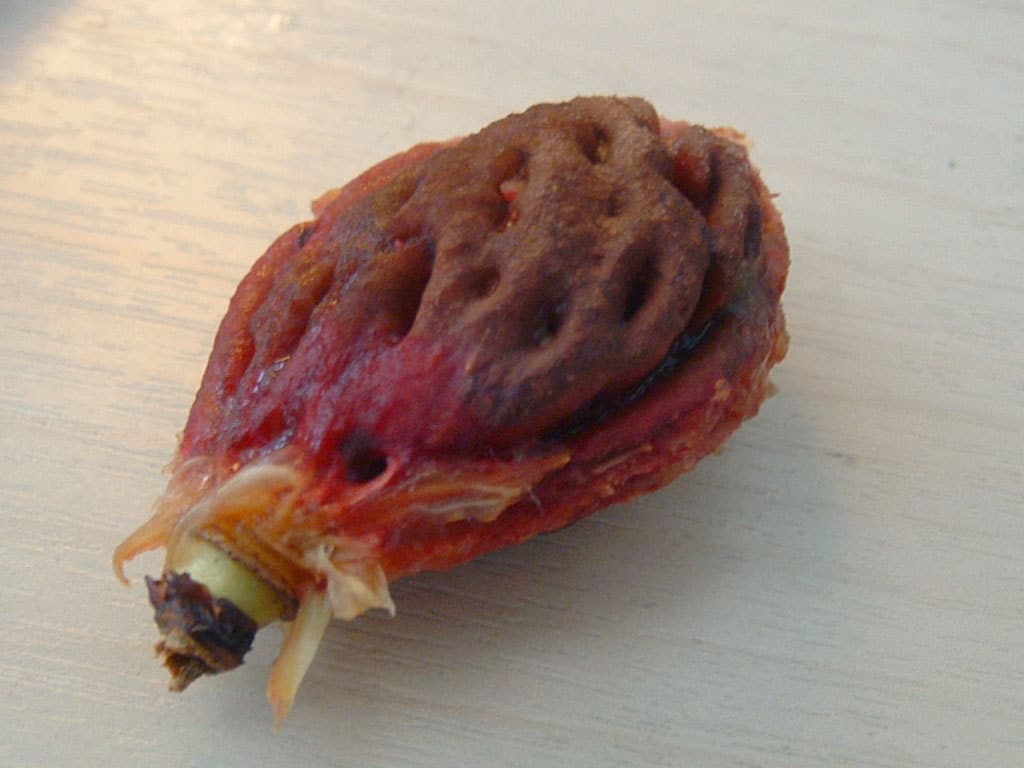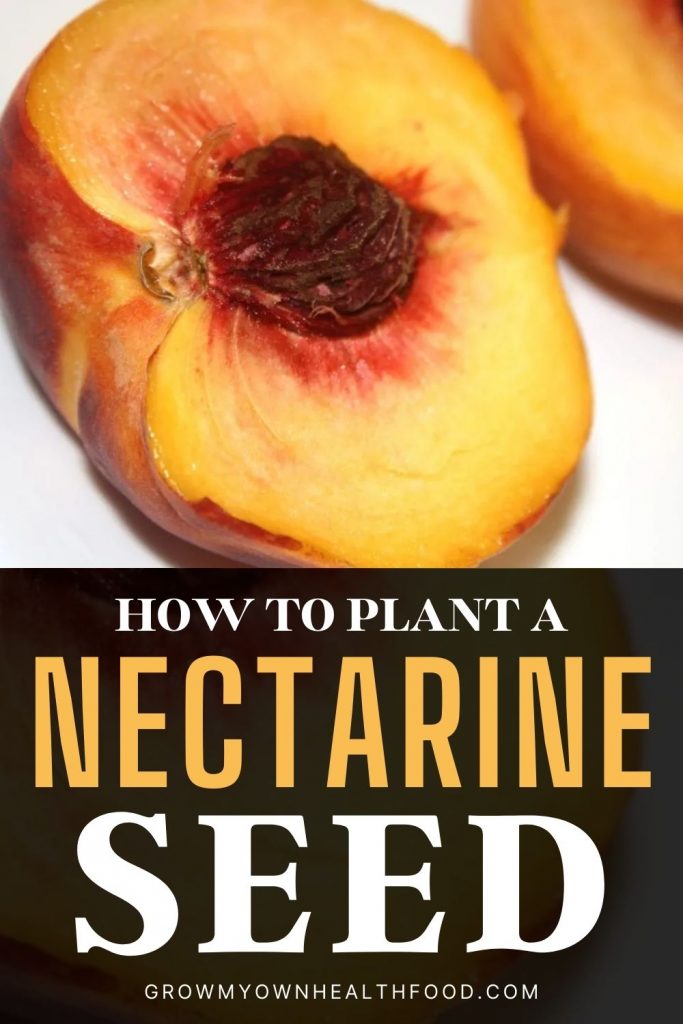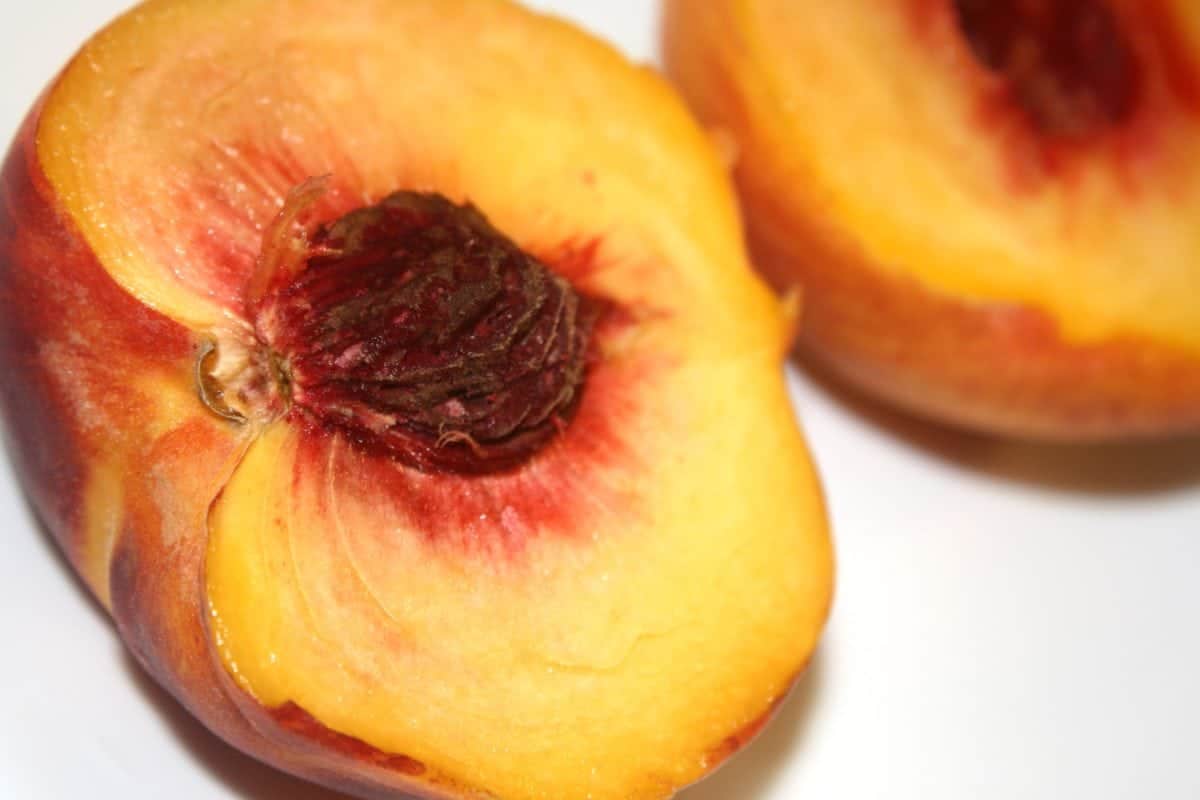Nectarine trees belong to the family of peach family but there is a slight difference. Peaches have a fuzzy covering whereas nectarines have smooth skin with no fuzz. They have the same taste and are widely enjoyed and devoured for their juiciness and tangy flavor. Both of them have a similar nutrient profile as they have natural sugars, vitamins, and minerals. Their planting procedure is also similar. This article discusses the step-by-step procedure to plant a nectarine seed and enjoy flavorful fruits. Planting a nectarine seed might seem difficult at first but it is not. These seeds will bear sweet and flavorful fruits if steps and instructions are followed properly. The steps are discussed below.
Ingredients Needed to Plant a Nectarine Seed:
- Nectarine Pits
- Organic Soil
- Seedling tray
- Container
- Fertilizer
- Package Content - 5 x seed tray with 40 drainage holes, 5 x base tray that hold the excess water that drains from seed trays, 5 x transparent dome that snaps over the two bottom trays quite nicely.
- Seed Tray - Gardzen 40-cell insert tray provides a simple, straightforward way to sow seeds and raise plants from cuttings.
- Base Tray - Ideal for use when propagating to catch the excess water that drains from seed trays.
Prices pulled from the Amazon Product Advertising API on:
Product prices and availability are accurate as of the date/time indicated and are subject to change. Any price and availability information displayed on [relevant Amazon Site(s), as applicable] at the time of purchase will apply to the purchase of this product.
Planting a Nectarine Seed Instructions to follow:

- Save the nectarine pits from tasty fruits.
- Carefully remove the almond-shaped seed from the nectarine pit by gently tapping it with a hammer. Discard the outer shell and keep aside the seeds.
- Now fill 3/4 of the container or seedling tray with slightly damp soil (totally wet soil will rot the seeds).
- Put the seeds in the container or a seedling tray.
- Lid the jar and put it in the fridge for two to three months and keep on checking the jar regularly.
- There is no need to water the seeds daily as the covered jar will retain its dampness.
- After some time rootlets will sprout from the seeds. Now the seeds are ready to be planted in other pots or containers.
- Each seed with a sprouted rootlet will need a separate jar or pot.
- Put each seed in a pot and cover it with organic soil.
- Water the pot to keep it moist but avoid excessive water as overwatering will damage the seeds.
- Within a few weeks, you will see sprouts appearing out of the seeds. Now the seeds are properly germinated and ready to be planted.
Here are some of the questions that might pop up in your mind while planting a nectarine seed.
How much time a nectarine seed needs to grow?
Nectarine trees take a bit longer to bear fruits. The growth process is slow as seeds take two to three months to give out rootlets and then the growth starts but it takes roughly from three to four years to bear flavorful fruits. The ripening mostly occurs from November to March.
How Often Should We Water the Growing Nectarine Tree?
During the germination of seeds, you just need moist soil, not wet soil. Later on, watering your plant once a week is sufficient. Overwatering can damage the plant. The case of transplantation of an already matured nectarine tree from one place to another might need frequent watering because of the change of environment.
What Does a Nectarine Tree Seed Need to Grow Properly?
Apart from the care of the planter, a nectarine seed needs proper shelter (to survive strong winds), ample sunlight, organic soil, and fertilizers ( especially 10-10-10 fertilizer is the best choice to be used every spring) to grow. It also needs pruning (when needed) for its healthy growth. The tree should be kept free of debris and weeds. Nectarine seeds should not be planted too close to other plants as it will put their survival and growth under threat. A safe distance of 8 to 12 feet must be maintained between the trees. Nectarine trees are self-fertile. They do not need another nectarine tree for pollination.
- ALL-NATURAL MIX: Burpee Organic Premium Potting Mix is formulated with plant food & coconut coir to promote seed & root growth and healthy flower, vegetable & herb plants.
- PERFECT FOR CONTAINERS: Use this growing mix for planting in containers or raised beds.
- RETAINS MOISTURE: Sustainable coconut coir helps hold the perfect amount of water for potted plants, indoor or outdoors.
Prices pulled from the Amazon Product Advertising API on:
Product prices and availability are accurate as of the date/time indicated and are subject to change. Any price and availability information displayed on [relevant Amazon Site(s), as applicable] at the time of purchase will apply to the purchase of this product.
Will Nectarine Trees Bear Fruits First Year?
No, nectarine trees bear fruits on second-year wood which means taking proper care of the tree will show its result in the next year. To promote healthy growth, one should make sure to provide all the nutrients needed for example potassium, nitrogen, and phosphorus. Phosphorus is used to enhance fruit growth in the tree. Pruning is another way to promote tree growth and helps in fruit formation.
How Often Should We Prune Nectarine Trees?
Pruning is necessary to avoid diseases and to make sure the tree grows healthy. Most trees need to be pruned every year, especially in the dormant season (or winters) but nectarine trees should be pruned in the spring season. Nectarine trees will give out new shoots from the bottom after pruning which promotes healthy growth of the trees.
What is the Best Fertilizer for Nectarine Trees?
To avoid the diseases and ensure the healthy growth of the nectarine trees the planter should use the best fertilizers. For nectarine trees, 10-10-10 fertilizers have always proved to be the best choice. The planter must fertilize the nectarine plants in March and May by using 3/4 of the fertilizer. One can also use manure, urea, and other nutrients needed to help in the growth of the nectarine trees.
- Can be used any time during the growing season but is ideal for spring and fall applications on lawns, gardens and flower beds
- Contains all quick-release nitrogen to provide the plant with immediate nutrition
- ~Each bag provides up to 5,000 square feet of cover
Prices pulled from the Amazon Product Advertising API on:
Product prices and availability are accurate as of the date/time indicated and are subject to change. Any price and availability information displayed on [relevant Amazon Site(s), as applicable] at the time of purchase will apply to the purchase of this product.
How to Plant a Nectarine Seed – Final Thoughts
To sum up, the article, planting a nectarine seed is not a difficult task but it needs a lot of patience as it takes a bit longer to grow and needs the special attention of the planter. To enjoy tangy fruits from nectarine trees, one should make sure to provide a perfect environment that can enhance the growth of nectarine trees and can help in fruit formation.
There are a few things that must be kept in mind while planting a nectarine seed. Firstly, properly germinate the seeds as discussed above, then plant the seeds with sprouted rootlets in a well-sheltered place where the seeds can receive good sunlight. The planter should also water and prune the growing tree whenever it is needed. Moreover, the use of fertilizers (especially 10-10-10 fertilizer) and other important nutrients is also necessary for the smooth growth of nectarine seeds. After reading this article you will have a good idea of how to plant a nectarine seed and how to take care of it properly to enjoy the fruits later on.










